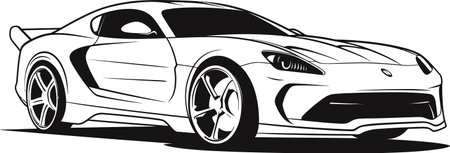Introduction to Timing Belts and Timing Chains
If you own a car in the U.S., chances are youve heard about timing belts and timing chains. These components play a critical role in your engine, but most drivers arent quite sure what they do or why theyre so important. In this section, well break down the basics of timing belts and timing chains—what they are, what they do, and why every American vehicle owner should care.
What Are Timing Belts and Timing Chains?
A timing belt is a rubber belt with teeth that connects your engines crankshaft to its camshaft. Its main job is to keep the engines valves opening and closing at the right times during each cylinders intake and exhaust strokes. A timing chain works on the same principle, but its made of metal links instead of rubber.
Roles in Your Engine
| Component | Main Material | Function |
|---|---|---|
| Timing Belt | Rubber (with fiber reinforcement) | Synchronizes crankshaft and camshaft movement using toothed engagement |
| Timing Chain | Metal (steel links) | Performs the same synchronization as a belt but with durable metal links |
Why They Matter for American Drivers
Whether youre driving a pickup across Texas or commuting in a sedan through New York traffic, your engine relies on precise timing to run smoothly. If your timing belt or chain fails, it can cause major engine damage—sometimes costing thousands of dollars to repair. Thats why knowing which one your vehicle has and how it affects maintenance is essential for every car owner in America.
2. Key Differences Between Timing Belts and Timing Chains
Function and Purpose
Both timing belts and timing chains play a crucial role in your car’s engine. They keep the camshaft and crankshaft perfectly synchronized, making sure that your engine’s valves open and close at just the right moments. While their job is the same, the way they do it—and what theyre made of—differs quite a bit.
Materials Used
| Type | Main Materials |
|---|---|
| Timing Belt | Reinforced rubber with fiber cords (often fiberglass or Kevlar) |
| Timing Chain | Hardened metal (usually steel) |
Explanation:
Timing belts are quieter and lighter because they’re made from high-strength rubber, which is reinforced to last longer. Timing chains, on the other hand, are made of metal and look a lot like bicycle chains. They’re tougher but can be noisier as your car gets older.
Lifespan and Maintenance
| Type | Average Lifespan (U.S.) | Maintenance Needs |
|---|---|---|
| Timing Belt | 60,000 to 100,000 miles | Needs regular replacement as part of scheduled maintenance |
| Timing Chain | 150,000+ miles (often “lifetime”) | Seldom needs replacement unless there’s an issue or high mileage wear |
Note:
If a timing belt fails, it can cause serious engine damage. That’s why replacing it on time is so important. Timing chains usually last much longer but can stretch or wear out, especially if you don’t change your oil regularly.
Which Vehicles Use Each System?
| Type | Common Vehicles in U.S. Market | Main Reasons for Choice |
|---|---|---|
| Timing Belt | Sedans, compact cars, some SUVs (e.g., older Honda Accord, Toyota Camry) | Lighter, quieter operation; cost-effective for small engines |
| Timing Chain | PICKUP trucks, performance vehicles, most newer models (e.g., Ford F-150, Chevy Silverado) | Durability; less frequent maintenance; better for high-power engines |
A Quick Reference:
If you drive an American pickup or a newer SUV, odds are you have a timing chain. If you have an older sedan or a compact car from the early 2000s or before, you might have a timing belt.
Main Takeaways on Timing Belts vs Chains in the U.S.
- Belt: Usually needs changing every 60k-100k miles; quieter; cheaper to replace but more regular maintenance.
- Chain: Built to last; can be noisy over time; often found in bigger vehicles and trucks.
The choice between a timing belt and chain comes down to your vehicle type, how much maintenance you want to do, and what your manufacturer recommends.

3. Common Issues and Symptoms of Failure
When it comes to timing belts and timing chains, both can develop problems that may lead to engine damage if not addressed promptly. Understanding the typical issues, warning signs, and potential consequences is especially important for drivers in the United States, where long highway drives, temperature extremes, and stop-and-go city traffic can all take a toll on these crucial components.
Typical Problems with Timing Belts and Chains
| Component | Common Issues | Why It Matters |
|---|---|---|
| Timing Belt | Cracking, fraying, glazing, stretching, missing teeth | Belt failure can cause loss of engine timing and possible engine damage |
| Timing Chain | Chain stretch, worn tensioner, noisy operation (rattling), guide wear | A loose or stretched chain can skip teeth or break, leading to serious engine issues |
Warning Signs of Timing Component Trouble
- Ticking or Rattling Noises: Unusual sounds from the engine bay—especially when starting cold or idling—can signal a worn belt or chain.
- Check Engine Light: A misaligned timing component can trigger sensors and turn on your dashboard warning light.
- Difficult Starting or Engine Misfires: If the belt or chain slips, the engine’s timing will be off, causing rough starts or misfires.
- Visible Wear: For vehicles with accessible timing belts (behind a cover), cracks or missing teeth mean replacement is overdue.
- Oil Leaks Near the Timing Cover: Oil can degrade belts or chains, and leaks may indicate failing seals around the timing system.
Potential Damage from Neglected Timing Components
If you ignore these symptoms and let your timing belt or chain fail completely, you’re looking at costly repairs. Here’s what could happen:
- Bent Valves: If the timing slips badly enough in an “interference” engine (common in many American cars), pistons can collide with valves, bending them out of shape.
- Piston Damage: Severe cases can crack pistons or even damage the cylinder head and block.
- Total Engine Failure: If broken parts get loose inside the engine, it might mean a full rebuild or replacement—something every car owner wants to avoid!
How U.S. Driving Conditions Affect Timing Components
The way Americans drive—long distances at highway speeds, frequent idling in traffic jams, harsh winters up north, and hot summers down south—puts extra stress on timing belts and chains. Regular inspections and timely replacement are key to keeping your engine healthy no matter where you live.
4. Replacement Guidelines and Service Intervals
If you’re a car owner in the U.S., knowing when and how to replace your timing belt or timing chain is key to keeping your engine running smoothly. Here’s what you should know about replacement guidelines, service intervals, and industry recommendations.
When Should You Replace a Timing Belt?
Timing belts are made of rubber and wear out over time. Most automakers recommend replacing the timing belt every 60,000 to 100,000 miles, depending on your specific vehicle model. Always check your owner’s manual for the manufacturer’s recommended interval. Ignoring this maintenance can lead to serious engine damage if the belt snaps while driving.
Common Signs Your Timing Belt Needs Replacing:
- Ticking noise from the engine
- The engine won’t start
- Rough idling or misfiring
- Visible wear or cracks on the belt (if inspected)
What About Timing Chains?
Timing chains are made of metal and are designed to last much longer than belts—often as long as the engine itself. There’s usually no set replacement interval, but they still require attention if problems arise. Most issues with timing chains come from lack of oil changes or using poor-quality oil, which can cause chain stretch or tensioner failure.
Signs Your Timing Chain Might Need Service:
- Rattling noise from the engine (especially at startup)
- Check Engine light comes on
- Poor engine performance
- Metal shavings in the oil
U.S. Industry Recommendations
| Component | Typical Replacement Interval | Main Warning Signs | Expected Cost Range* |
|---|---|---|---|
| Timing Belt | 60,000 – 100,000 miles | Ticking noises, engine won’t start, visible wear | $400 – $1,000+ |
| Timing Chain | No set interval (inspect at 120,000+ miles) | Rattling sounds, Check Engine light, poor performance | $1,000 – $2,500+ |
*Costs vary by vehicle make/model and local labor rates.
What Should the Average American Driver Expect?
- If your car has a timing belt, plan to budget for its replacement as part of regular maintenance—usually once in your car’s lifetime if you drive average miles per year.
- If you have a timing chain, routine oil changes are crucial for longevity. Listen for unusual noises and get them checked out early.
- Your mechanic will often inspect these parts during major services; always ask if you’re unsure about your vehicle’s needs.
- If you’re buying a used car, ask for service records to see if the timing belt has been replaced or if there’s any chain-related history.
5. Cost Considerations and Choosing What’s Right for You
Understanding Replacement Costs
When deciding between a timing belt and a timing chain, cost is often a major factor for American car owners. Here’s a breakdown of standard replacement costs:
| Component | Average Replacement Cost | Replacement Frequency |
|---|---|---|
| Timing Belt | $400–$1,000 (including parts & labor) | Every 60,000–100,000 miles |
| Timing Chain | $1,000–$2,500 (including parts & labor) | Rarely (often lasts the life of the engine) |
Long-Term Value: Which Pays Off?
Timing belts have a lower upfront cost but need regular replacement as part of scheduled maintenance. On the other hand, timing chains are more expensive to replace but usually last much longer—sometimes as long as your vehicle does.
Pros and Cons for American Drivers
| Timing Belt | Timing Chain | |
|---|---|---|
| Pros | – Quieter operation – Lower initial replacement cost – Simple design reduces weight in some engines |
– Typically lasts longer – Less routine maintenance – Better for high-mileage drivers and work trucks |
| Cons | – Needs periodic replacement – Risk of serious engine damage if it breaks – Can be overlooked during regular service |
– Higher upfront replacement cost – Can be noisier as it ages – More complex repair if issues arise |
Making the Right Choice for Your Car or Truck
If you’re driving a family sedan or commuter car and want to keep maintenance costs predictable, a timing belt may be just fine—just remember to follow the manufacturer’s replacement schedule. If you own a truck, SUV, or put lots of miles on your ride each year, a timing chain could save money over time because it rarely needs replacing.
Quick Tips for American Drivers:
- Check your owner’s manual: See what your vehicle uses and when service is recommended.
- Consider your driving habits: High-mileage or heavy-duty use? A timing chain might offer better long-term value.
- Budget for maintenance: Timing belt replacements are routine; timing chain repairs are rare but pricier.
- Talk to your mechanic: Local shops can give advice based on your car’s age, condition, and how you drive.
No matter which option your vehicle has, keeping up with maintenance is key to avoiding big repair bills down the road.

